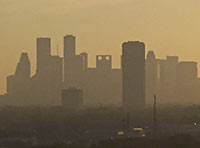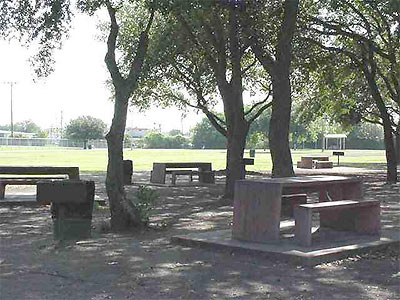CONSUMERS SEEK TO ESCAPE FROM HEAVY SMOG BY BUYING MORE CARS Meanwhile, in China: Unusually heavy smog levels led to disruptions across the country this morning. Beijing issued its first-ever Red Alert for unsafe air quality, shutting down schools and business across the capitol as particulate matter measurements topped out at 10 times higher than World Health Organization safety standards. National news agency Xinhua reported a deadly 33-car pileup in Shanxi province, exacerbated by poor visibility due to smog. On the East Coast, Hangzhou air traffic faced delays caused by smoggy conditions, which reduced visibility to 250 meters. Smog levels are expected to continue at today’s extreme levels for several more days. November smog is also thought to have contributed to a spike in car sales — the commonly held perception that air is cleaner inside a car is thought to be boosting vehicle purchases. Increased auto ownership in the past decade is ranked alongside coal-fired power plants as a leading cause of Chinese air pollution. [Independent, Xinhua, Bloomberg]
Tag: Smog
COMMENT OF THE DAY: WHAT’S IN YOUR AIR  “There are three big air quality concerns for Houstonians: toxics, smog and particulates. Living in the East End puts you on the front line for toxic emissions. Toxics tend to be heavier than air and do not travel very far from where they are released. Milby Park had almost off the chart levels of Butadiene 1,3 back in mid 2000 due to problems at the Texas Petrochem plant next door. That problem was fixed and levels have come way down. But, if there is a release or a leak that is sending off toxics, the East End gets the best whiff. On days where there is little wind, the East End is also the spot most likely to get smog (NOx+SOx+sun=ozone). If there is good circulation in the atmosphere, Pearland to Sugar Land can see pretty bad smog, especially with the old coal plant in Sugar Land. But so can everywhere from Memorial Park up to the Woodlands. Houston’s smog has improved dramatically thanks to some good work by regulators and industry in identifying and going after the highly reactive stuff that really drives ozone production. But Houston is still in the top ten nationally when it comes to ozone. . . . Particulates are not as big a concern in Houston as we do not have much steel or other industries that are heavy on particulates, but we are still just over the new Federal standard of 12 parts per somethingerother. The particulates on the East End are generally higher than in other parts of town due to all the industry in the area. The air quality on the east side is definitely worse than on the west side. But ozone (smog) can visit just about anyone in the Houston area.” [Old School, commenting on Comment of the Day: The Limits of Eastward Development] Illustration: Lulu
“There are three big air quality concerns for Houstonians: toxics, smog and particulates. Living in the East End puts you on the front line for toxic emissions. Toxics tend to be heavier than air and do not travel very far from where they are released. Milby Park had almost off the chart levels of Butadiene 1,3 back in mid 2000 due to problems at the Texas Petrochem plant next door. That problem was fixed and levels have come way down. But, if there is a release or a leak that is sending off toxics, the East End gets the best whiff. On days where there is little wind, the East End is also the spot most likely to get smog (NOx+SOx+sun=ozone). If there is good circulation in the atmosphere, Pearland to Sugar Land can see pretty bad smog, especially with the old coal plant in Sugar Land. But so can everywhere from Memorial Park up to the Woodlands. Houston’s smog has improved dramatically thanks to some good work by regulators and industry in identifying and going after the highly reactive stuff that really drives ozone production. But Houston is still in the top ten nationally when it comes to ozone. . . . Particulates are not as big a concern in Houston as we do not have much steel or other industries that are heavy on particulates, but we are still just over the new Federal standard of 12 parts per somethingerother. The particulates on the East End are generally higher than in other parts of town due to all the industry in the area. The air quality on the east side is definitely worse than on the west side. But ozone (smog) can visit just about anyone in the Houston area.” [Old School, commenting on Comment of the Day: The Limits of Eastward Development] Illustration: Lulu
HOW HOUSTON’S AIR GOT BETTER  During the past decade, Houston’s notoriously polluted air has become — well, if not quite good, then not quite as bad, says NPR’s Richard Harris. (Pay no attention to what that ozone app may or may not tell you.) How? Well, it seems that pollution regulators in the early aughts had been worrying about all the wrong gases: “They were going all-in against [only] one of the pollutants that create smog, while downplaying the role of other emissions from the petrochemical plants,” reports Harris. “Barges carting chemicals up and down the [Ship Channel] were leaking. . . . And some types of storage tanks were leaking as well. . . . It turns out that routine day-to-day emissions were not the biggest problem.” Since then, regulations targeting those chemicals, like ethylene — as well as the use of infrared cameras that can spot them — appear to have made a difference: Port of Houston Authority employee Dana Blume tells Harris: “I can look out of my office window now and almost every single day see downtown.” [NPR; previously on Swamplot] Photo: Flickr user stmu_mike
During the past decade, Houston’s notoriously polluted air has become — well, if not quite good, then not quite as bad, says NPR’s Richard Harris. (Pay no attention to what that ozone app may or may not tell you.) How? Well, it seems that pollution regulators in the early aughts had been worrying about all the wrong gases: “They were going all-in against [only] one of the pollutants that create smog, while downplaying the role of other emissions from the petrochemical plants,” reports Harris. “Barges carting chemicals up and down the [Ship Channel] were leaking. . . . And some types of storage tanks were leaking as well. . . . It turns out that routine day-to-day emissions were not the biggest problem.” Since then, regulations targeting those chemicals, like ethylene — as well as the use of infrared cameras that can spot them — appear to have made a difference: Port of Houston Authority employee Dana Blume tells Harris: “I can look out of my office window now and almost every single day see downtown.” [NPR; previously on Swamplot] Photo: Flickr user stmu_mike

Looking for a home in an in-town location, but don’t want to miss that exhilarating feeling you get from East Side neighborhoods near the Ship Channel?
Why not start your search near Bayland Park, at the corner of Bissonnet and Hillcroft, just west of Bellaire? It’s outside the Loop, far to the west of Houston’s industrial areas, close to some of some of the city’s most dynamic neighborhoods . . . and recently was rated one of the most consistently smoggy places in Houston.
That’s right: Smog is worse on the West Side.
The data may surprise many Houstonians who associate smog with the chemical refining and industrial byproducts that foul the air in East Harris County.
In fact, the highest ozone readings in the city are routinely captured by monitors located on Houston’s densely populated southwest side. Recent data shows Bayland Park, just west of Bellaire, to be one of Houston’s smoggiest neighborhoods. According to the Texas Commission on Environmental Quality, the Bayland Park monitor, located in the 6400 block of Bissonnet Street, recorded 45 days in the last three years when ozone levels violated public health standards.
During that period, the monitor registered ozone concentrations as high as or greater than those recorded by monitors in the Ship Channel region.
Howzat happen?
University of Texas chemical engineer David Allen analyzed data collected by the Bayland Park monitor in 2006. He and others determined that climate patterns explained the high ozone concentrations on Houston’s west side. Based on computerized modeling of weather patterns, Allen said nearly every incident of excessive ozone levels in Bayland Park that year happened on days characterized by the same weather pattern: hot and sunny, with still air in the morning and light winds from the east blowing in the afternoon.
“The east winds pick up Ship Channel air and carry it all the way into west Houston where it settles over neighborhoods,†Allen said.
That’s the smell of money.
- Dubious honor: Bayland leads in bad air [Bellaire Examiner]
Photo: Harris County Precinct 3

